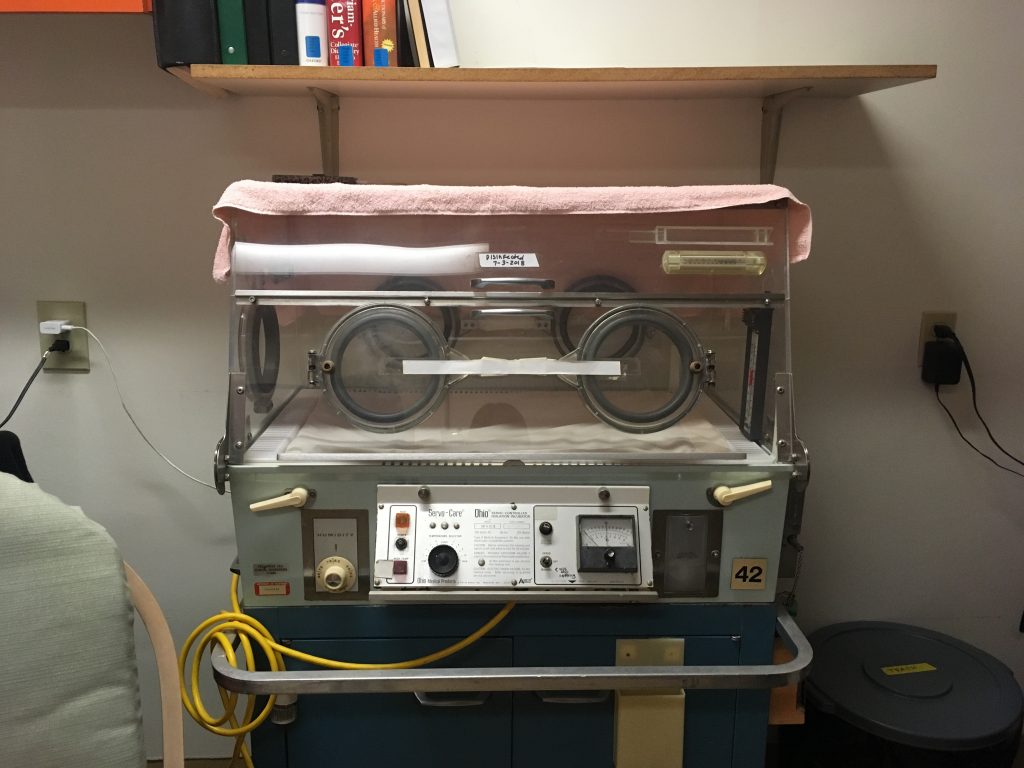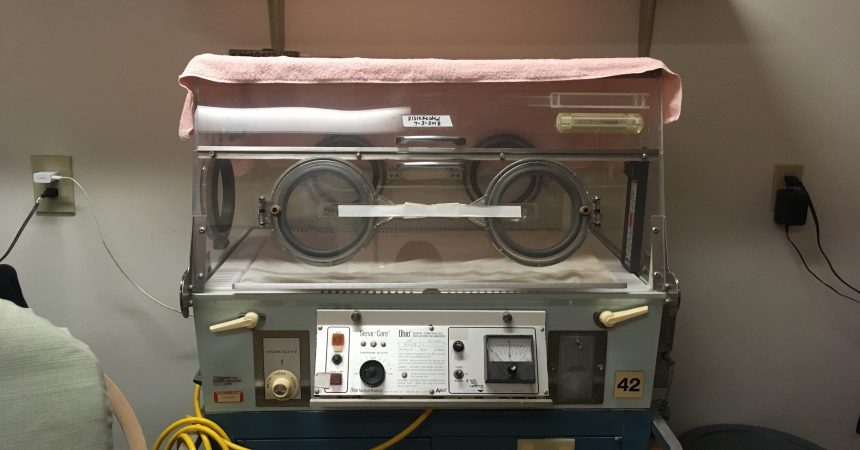Zoo InternQuest is a seven-week career exploration program for San Diego County high school juniors and seniors. Students have the unique opportunity to meet professionals working for the San Diego Zoo, Safari Park, and Institute for Conservation Research, learn about their jobs, and then blog about their experience online. Follow their adventures here on the Zoo’s website!
 If you are familiar with Grey’s Anatomy, the term NICU is likely one you’ve heard before. For anyone else, it probably sounds like a foreign language. The acronym stands for Neonatal Intensive Care Unit, and it is specializes in the care of ill or premature newborn infants. The San Diego Zoo has a very similar unit, aptly named the NACU (Neonatal Assisted Care Unit), to help ensure babies who suffer from injury or infection at birth, maternal neglect (which is common for first time moms), maternal death, or inadequate milk supply survive and can be reintroduced to their family groups.
If you are familiar with Grey’s Anatomy, the term NICU is likely one you’ve heard before. For anyone else, it probably sounds like a foreign language. The acronym stands for Neonatal Intensive Care Unit, and it is specializes in the care of ill or premature newborn infants. The San Diego Zoo has a very similar unit, aptly named the NACU (Neonatal Assisted Care Unit), to help ensure babies who suffer from injury or infection at birth, maternal neglect (which is common for first time moms), maternal death, or inadequate milk supply survive and can be reintroduced to their family groups.
Old-timers may remember when the Zoo used to have a nursery where guests could peer through the glass and take a look at the baby animals. The Zoo has since shifted away from that take on infant care, hence the name change to NACU, with an emphasis placed on assisted care. Whenever possible, the Zoo avoids hand rearing and provides only necessary medical care and/or milk supply, leaving important social lessons to be taught by the patient’s group.
The NACU is a division of the Veterinary Services Department that contains two full time and three part time staff members. Given that difficulties at birth are not planned, the shift hours are often unpredictable and based on need. The care required varies case by case, and also species by species. Hoofstock species’ care is less intensive, and usually on a day schedule, so staff members are able to work regular day shifts (and get a good night’s sleep!). Primates, carnivores, and marsupials, however, require very intensive care and the NACU team has to rotate through a 24-hour schedule, night shifts included.
The baby animals that undergo treatment and care in the NACU often receive the same round-the-clock care they would from their own mother by the NACU team members. A typical day includes litter marking (for identification purposes), recording weights and temperatures, preparing formula, bottle feeding, and providing burping and manual relief, as baby animals often need stimulation from their mothers in order to eliminate. Team members are also in charge of administering medication, cleaning, washing, and sterilizing bottles and other feeding equipment, and lots of record keeping. The record keeping is one of the most important parts of the job, as other institutions may contact the San Diego Zoo when they acquire a particular species they don’t have experience in raising. The San Diego Zoo is then able to compile a short summary of their records and send a convenient “How To Raise A ____” file to help them out.
On Thursday, we were given the pleasure of meeting Ms. Kim Weibel, one of the NACU’s keepers. After a brief presentation, we were taken to the NACU to learn how to prepare formula for a baby Speke’s gazelle, which was a far more complicated process than anticipated. After working with nutritionists to determine what to use for the formula, there are a number of calculations involving gastric capacity and body weight percentages that must be made to ensure the animal gets the proper amount of formula each day. Underfeeding won’t give the baby enough nutrients to grow, and overfeeding/exceeding their gastric capacity can result in colic or bloat. The type of nipple used on the bottle must also be taken into consideration. If it isn’t just right, the animal won’t latch on and consume their formula. Making the right size hole in the nipple is also crucial. One too small, and the baby will struggle to receive enough formula. One too big, and the baby might inhale formula into its lungs, which can lead to pneumonia.
Members of the NACU team constantly have to think about how they will prepare the babies in their care for the future. If it is an animal destined to be an ambassador, they will use a more hands-on approach, as the animal will likely be handled and around visitors frequently. An animal ambassador is the Zoo’s representative of a species. However, if it is destined to return to the group, the NACU keepers will use a hands-off approach. Returning an animal to their group can be one of the trickier aspects of the job. Reintroductions to the baby’s group and exhibit must be done gradually as all members of the herd or family may not be friendly to the newcomer. Through the use of visual screens, introduction spaces, and creeps (areas where the baby can enter but adults are too large to), both the baby and the group become acclimated to each other while still providing the baby with a sense of security. When the baby has been successfully introduced to the group and transitioned to eating solid food, the NACU’s job is done!
Work in the NACU is difficult, but critical to the survival of these fragile infants, and tremendously rewarding. Not only are the lives of these babies saved, but the conservation of the species bolstered, as many of these babies grow up successfully raise babies of their own.
Olivia, Real World Team
Week Three, Fall Session 2018


